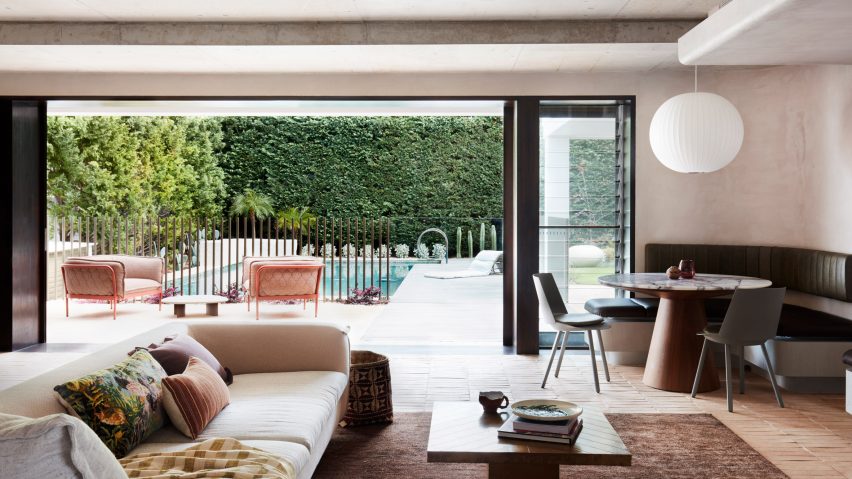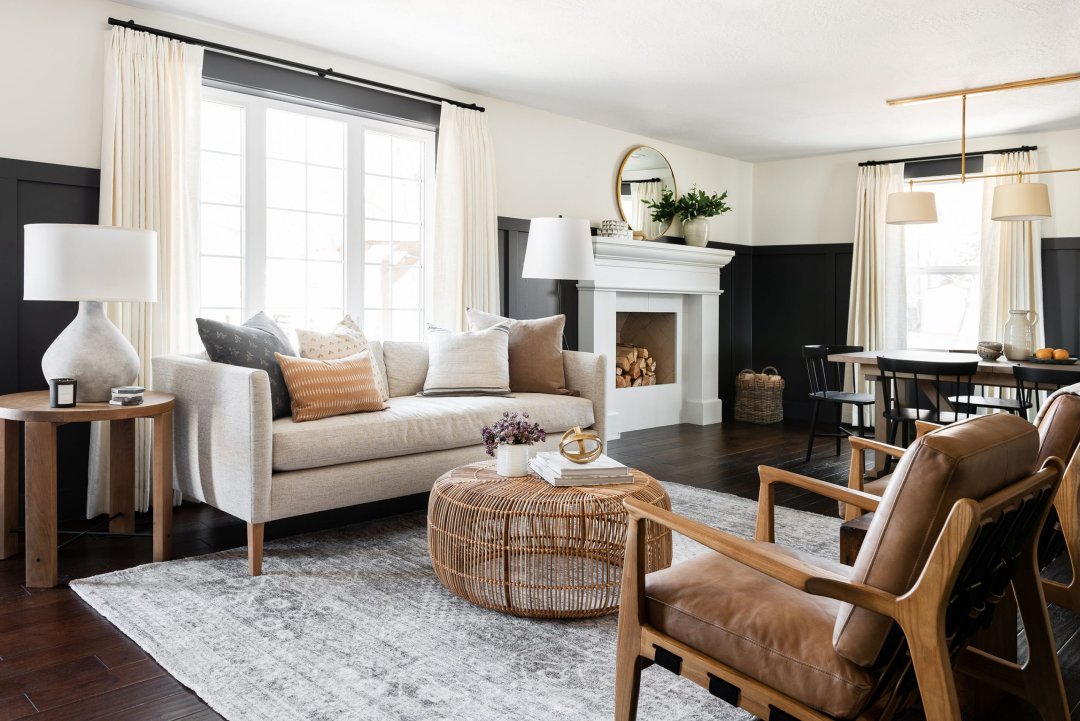Simple Interior Design for Calm Spaces creating interiors that exude tranquility doesn’t require elaborate ornamentation or hefty budgets. By distilling design to its essentials—thoughtful layouts, soothing palettes, and tactile subtleties—you can craft calm simple interior spaces where every element serves purpose. This guide unfolds principles, strategies, and nuanced techniques to help you sculpt environments of serene simplicity. Short sentences invigorate. Longer paragraphs clarify.

Embrace Intentional Minimalism
Minimalism isn’t about stark austerity; it’s the art of paring back to highlight what truly matters.
- Selective Curation: Keep only items that contribute functionally or emotionally.
- Negative Space: Let emptiness breathe life into rooms and prevent visual fatigue.
- Quality Over Quantity: A single handcrafted vase can speak more than a clutter of trinkets.
Short. Then long: when every piece earns its place, the overall composition feels both deliberate and effortless—a hallmark of calm simple interior spaces.
Establish a Soft, Serene Palette
Color sets the emotional tone. Soft, subdued hues foster relaxation.
- Whispered Neutrals
- Warm off-whites, pale greiges, and soft taupes provide a gentle canvas.
- Subtle Accents
- Dusty sage, muted seafoam, and blush beige lend a whisper of personality.
- Monochromatic Depth
- Layering different tints of the same hue—e.g., chalk white walls, ivory upholstery, cream drapery—results in understated richness.
Short. Then longer: a cohesive palette seamlessly connects rooms, inviting the eye to glide without interruption—essential for calm simple interior spaces.
Prioritize Functional Layouts
Simplicity thrives on logical, human-centered floor plans.
- Clear Circulation Paths: Furniture should define rather than obstruct natural walking routes.
- Activity Zones: Cluster related functions—reading nooks, workstations, lounging areas—within clear clusters to minimize cognitive load.
- Sightline Alignment: Align focal points (e.g., windows, artworks) so they’re visible from multiple vantage points.
Short. Longer: by organizing space around how people move and interact, you cultivate interiors that feel intuitive and soothing—core to calm simple interior spaces.
Layer Textures for Subtle Warmth
Flat, one-dimensional surfaces can feel chilly. Texture introduces tactile intrigue without visual clutter.
- Natural Fibers: Linen drapes, cotton weaves, and jute rugs infuse organic warmth.
- Soft Upholstery: Bouclé or microsuede sofas invite touch and comfort.
- Matte and Satin Finishes: Walls in flat matte paired with satin woodwork catch light gently.
- Handcrafted Elements: Woven baskets, carved wood accessories, and ceramics with subtle glazing.
Short. Then long: alternating nubby, smooth, and matte surfaces creates a sensory melody where each layer complements the next—key for calm simple interior spaces.
Curate Purposeful Furnishings
Each furniture piece should marry form and function.
- Streamlined Seating
- Sofas and chairs with clean lines and exposed legs to reveal more floor area.
- Upholstery in neutral or tonal fabrics that age gracefully.
- Multi-Functional Pieces
- Ottomans with internal storage.
- Consoles that double as desks or entryway catch-alls.
- Scale Awareness
- Choose proportions suited to room dimensions—oversized sofas overwhelm; petite chairs vanish.
Short. Then longer: furnishing thoughtfully ensures each item serves purpose while contributing to an uncluttered, serene tableau—an indispensable principle in calm simple interior spaces.
Harmonize Lighting Layers
Light choreographs mood and defines spatial perception.
- Ambient Lighting: Soft, diffused ceiling fixtures or hidden cove LEDs create an even base glow.
- Task Lighting: Adjustable floor lamps and desk lights deliver focused illumination for reading, crafting, or working.
- Accent Lighting: Discreet wall washers or picture lights subtly highlight art or architectural niches.
Short. Expanded: employing multiple lighting layers enables transitions from bright morning energy to mellow evening repose—essential in crafting calm simple interior spaces.
Introduce Biophilic Elements
Connection to nature calms the mind and purifies the air.
- Potted Greenery: A single fiddle‑leaf fig or a cluster of succulents brings life without excess.
- Natural Materials: Wood, stone, and cork surfaces ground interiors in tactile authenticity.
- Botanical Textiles: Linen cushions or printed throws with subtle leaf motifs nod to the outdoors.
Short. Then long: integrating living matter fosters well-being and reinforces the organic simplicity vital to calm simple interior spaces.
Adopt Soft, Sculptural Forms
Hard edges can feel jarring. Embrace gentle curves and rounded silhouettes.
- Arched Doorways and Alcoves
- Reinforce a sense of shelter and continuity.
- Curvilinear Furniture
- Sofas with curved backs or round coffee tables invite gathering.
- Circular Rugs and Mirrors
- Softly conclude rectangular floorplans with a visual flourish.
Short. Expanded: sculptural forms ease transitions between areas and evoke a sense of calm continuity—hallmarks of calm simple interior spaces.
Maintain Careful Accessorizing
Accessories should serve as punctuation, not noise.
- Odd-Numbered Groupings: Three ceramic vessels or five framed botanical prints feel more organic than even sets.
- Statement Object: A single, striking piece—like a handcrafted vase—anchors a shelf or console.
- Rotational Edits: Swap small accessories seasonally to maintain freshness and avoid accumulation.
Short. Longer: disciplined accessorizing enhances interest without clutter, ensuring interiors remain serene—essential in calm simple interior spaces.
Craft Quiet Vignettes
Small, purpose-driven scenes draw the eye without overwhelming.
- Reading Corner: A low-profile armchair, side table, floor lamp, and cozy throw.
- Entry Nook: A slender console, minimalist tray for keys, and a round mirror.
- Vanity Zone: A floating desk, cushioned stool, and soft-hued tabletop accessories.
Short. Then long: vignettes provide moments of rest and reflection, reinforcing the concept of calm simple interior spaces through intentional pause points.
Embrace Consistent Materiality
Repetition of materials across rooms creates cohesion.
- Uniform Flooring: Continuity in wood or tile reinforces flow.
- Matching Hardware Finishes: Brushed brass or matte black repeated on cabinetry and doors.
- Coordinated Textiles: Linen bedding and drapes in complementary tones.
Short. Expanded: consistency in material vocabulary guides the eye and soothes the psyche, building the unified calm central to calm simple interior spaces.
Leverage Subtle Color Pops
Even in minimal schemes, a whisper of color enlivens without jolting.
- Pastel Accents: Pale blush or soft mint in cushions or accessories.
- Earthy Tones: Clay terracotta or ochre artifacts evoke grounded warmth.
- Tone-on-Tone Layers: A deeper shade of the base wall color on a cabinet or shelf interior.
Short. Then longer: restrained infusions of hue punctuate neutrals with life, upholding serene simplicity—integral to calm simple interior spaces.
Optimize Storage for Serenity
Hidden storage preserves visual calm.
- Built-In Cabinetry
- Floor-to-ceiling systems with flush doors eliminate visual clutter.
- Under‑Sofa Drawers
- Utilize seldom-used spaces to stow extra throws or books.
- Baskets and Boxes
- Neutral woven containers corral items on open shelves without disrupting aesthetic.
Short. Expanded: thoughtful storage solutions shield daily essentials from view, allowing calm simple interior spaces to remain uncluttered sanctuaries.
Soundscapes and Scent
Ambient sound and fragrance complete the sensory atmosphere.
- White-Noise Machines or Soft Music: Gentle ambient melodies or nature sounds support relaxation.
- Essential Oil Diffusers: Lavender, cedarwood, or eucalyptus aromas evoke restful calm.
- Textural Absorbers: Thick rugs and drapes muffle echoes, reducing auditory clutter.
Short. Then long: engaging multiple senses deepens the immersive tranquility unique to calm simple interior spaces.
Case Study: A Coastal Zen Retreat
Imagine a 600-square-foot seaside cottage transformed into a serene haven. Wide-plank whitewashed oak floors unify every corner. Walls are clad in pale dove gray shiplap. A linen-upholstered daybed, rounded at the corners, sits against an arched alcove. Above, recessed cove lighting washes the ceiling in gentle glow. A driftwood coffee table with sculptural form anchors a woven jute rug. Opposite, wall-mounted cabinets in soft cream provide hidden storage. A single eucalyptus branch stands in a hand-thrown ceramic vase. Open shelves hold three white porcelain vessels, carefully spaced. The kitchen features pale stone countertops and minimalist matte-brass taps. An architrave-less doorway leads to a compact bath, clad in muted seafoam tile. A frameless mirror reflects the soft light. Linen curtains filter the ocean breeze, creating dappled patterns. This vignette exemplifies calm simple interior spaces, where every decision reinforces quietude, flow, and unassuming beauty.
Practical Implementation Roadmap
- Audit Belongings
- Sort items into keep, donate, and stow categories.
- Retain only what sparks joy or serves purpose.
- Define Your Palette
- Select base neutrals and one subdued accent color.
- Test swatches in varied light before committing.
- Map Spatial Flow
- Sketch furniture layouts prioritizing clear pathways.
- Adjust protruding pieces to widen circulation.
- Layer Textures
- Introduce at least three distinct material types—wood, fiber, stone.
- Balance hard and soft finishes for tactile harmony.
- Refine Lighting
- Install dimmable ambient sources first.
- Add task and accent lights strategically.
- Curate Accessories
- Choose odd-numbered, purpose-driven decor items.
- Rotate seasonally to prevent accumulation.
Short. Then longer: following this roadmap embeds the principles of calm simple interior spaces, guiding each step toward a cohesive, tranquil home.
Maintenance and Evolution
Quiet simplicity thrives on gentle stewardship.
- Regular Editing: Every three months, reassess shelves and surfaces for excess.
- Textile Care: Launder throws and dust woven baskets to preserve freshness.
- Plant Tending: Prune and replace greenery as needed to maintain vibrancy.
- Lighting Recalibration: Swap bulbs or adjust dimmer presets with seasonal daylight shifts.
Short. Expanded: conscientious upkeep ensures that calm simple interior spaces remain true to their restorative promise over time.
Realizing calm simple interior spaces demands intentional reduction, harmonious palettes, and sensory layering. By focusing on functional layouts, restrained accessorizing, and natural materials, you foster environments where mind and body unwind. Begin by clarifying needs, curating belongings, and sketching flow. Then layer texture, light, and greenery to cultivate calm. With disciplined editing and mindful maintenance, your home becomes a sanctuary of serene simplicity—where every breath feels lighter and every moment feels at ease.






